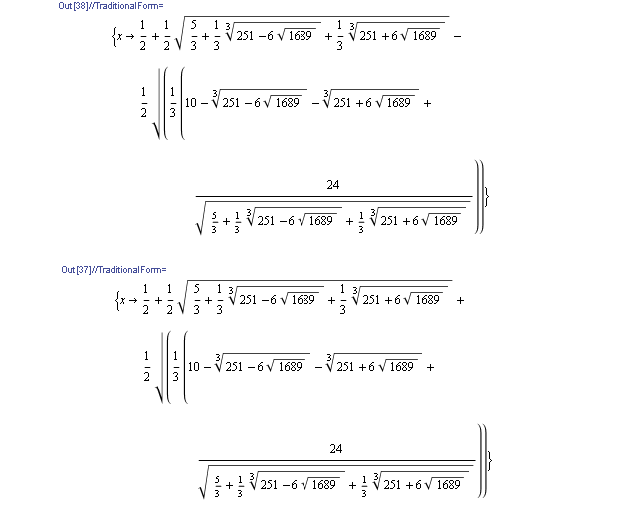(→Pg.329, #5) |
(→Pg.329, #5) |
||
| Line 53: | Line 53: | ||
<math>f(x) = 2x + 1 -e^{-x}</math> | <math>f(x) = 2x + 1 -e^{-x}</math> | ||
| + | |||
| + | --[[User:Jmason|John Mason]] | ||
Revision as of 14:21, 27 October 2008
8.8 #54
Does this indefinite integral converge for anyone? Also, if you are having trouble with the integral, take a look at the derivatives of inverse hyperbolic functions. --John Mason
It does not converge for me. I used direct comparison to test whether it converges or not. I started by comparing $ \sqrt{x^4-1} $ and $ \sqrt{x^4} $ It was easy from there. --Josh Visigothsandwich
Thanks. I'm not really sure that I needed to use some sort of comparison to show it didn't converge, as it did integrate nicely, but its good to have a second opinion, be that mathematical or otherwise. --John Mason
It does not converge for me either, but Josh, be careful with your comparison. It's not really valid to use $ 1/\sqrt{x^4} $ as the function for comparison, because $ x/\sqrt{x^4} < x/\sqrt{x^4-1} $, albeit infinitesimally less. I used $ (g(x) = 1/x^{0.99}) > (f(x) = x/\sqrt{x^4-1}) $, in which case P < 1 and diverges. --Randy Eckman 15:44, 26 October 2008 (UTC)
That is true. But if you start out with that as your comparison:
$ \sqrt{x^4} > \sqrt{x^4 - 1} $
$ \text{For } x > 0 $
$ x\sqrt{x^4} > x\sqrt{x^4 - 1} $
$ \frac{x}{\sqrt{x^4 - 1}} > \frac{x}{\sqrt{x^4}} = \frac{x}{x^2} = \frac{1}{x} $
$ \int^\infty_4 \frac{dx}{x} = \infty $
Certainly much cleaner than working with decimal powers. --John Mason
Also, remember, $ \int_1^{\infty}\frac{1}{x^p}dx $ diverges as long as $ p\le 1 $. So if p = 1, it still diverges. That's why it's okay to use the comparison I used. I did what John did, only I multiplied the inequality by x after taking the inverse of both sides and switching the inequality sign.His Awesomeness, Josh Hunsberger
Pg. 329, #16
How accurate do we need to make our answers for the roots? After four iterations, I have the first point accurate to four digits. The text doesn't specify a number of correct digits, and out of curiosity I found the precise roots on Mathematica. I don't know how the textbook could expect us to calculate exactly this:
{x -> 0.630115} {x -> 2.57327}
--Randy Eckman 17:43, 26 October 2008 (UTC)
I went to 10 digits, as that was all my calculator could show. And for the record "Reckman" is a very cool name. --John Mason
And I went to five digits because that's all my calculator would show me (I think I can change that, but i wasn't sure how). His Awesomeness, Josh Hunsberger
Pg.329, #5
I don't really understand how to do #5. It seems like there isn't an actual function. Are we supposed to use maple? Can someone help get me started?
--Klosekam 16:19, 27 October 2008 (UTC)
Since you need to know where
$ e^{-x} = 2x + 1 $
you can just subtract out one side and solve for the roots (aka at what value of x the function takes a zero. So you can use
$ f(x) = 2x + 1 -e^{-x} $


